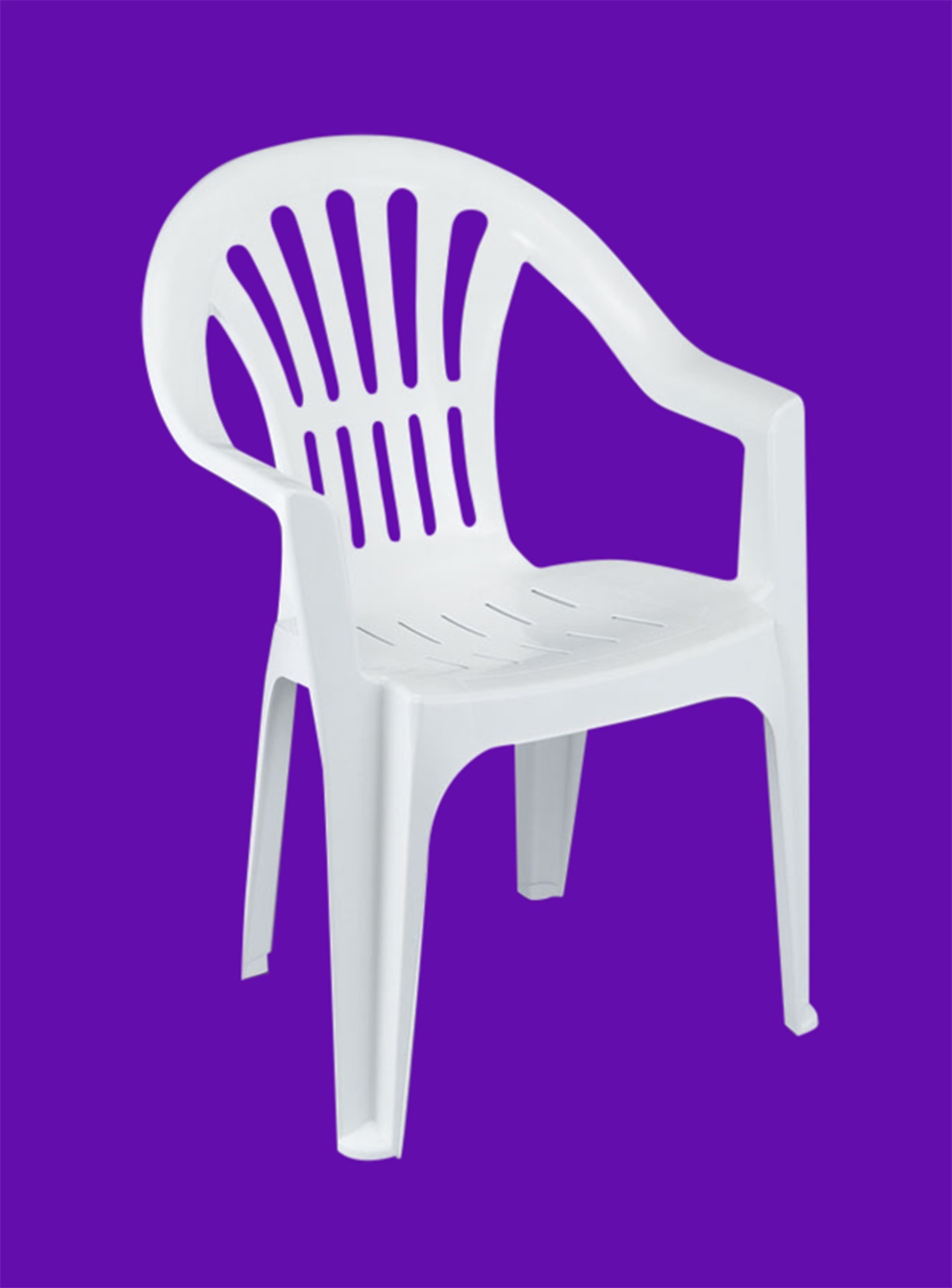A POPULAR ICON IN NEED OF LOVE
Its name refers to a seat made of a single piece of material, although it is difficult to determine who invented it. Endlessly reproduced all over the world, the white plastic chair has infiltrated our daily lives to the point of overdose. In the space of a few decades, it has become to design what the white cotton T-shirt is to fashion: a universal basic suitable for all contexts – indoors, outdoors, with or without armrests – but with a cheap label stuck to it.
Banned from certain elegant establishments and municipalities, the monobloc chair is nonetheless one of the most popular and best-selling creations in the world.
A CHAIR AT THE HEART OF INDUSTRIAL DEVELOPMENTS
The centrepiece of design, the chair has undergone many evolutions and minor revolutions. A utilitarian object par excellence - for working, resting, eating - many architects and designers have reinvented it throughout history, taking advantage of more recent production methods.
Although some sources attribute the design of the one-piece chair to Canadian Douglas C. Simpson in 1946, as part of a national research project aimed at reusing plastics and plywood from World War II military technologies, it came up against mass production.
It was not until the 1970s and the advent of a new generation of polymers that the moulding process, first developed for plywood, glass-fibre reinforced polyester and polyurethane foam, led to the mass production of one-piece chairs. With the switch to polypropylene, the newly injection-moulded seats, using an ultra-rational process, became more widely available.
A DESIGN TO CONQUER ALL SPACES
Ironically, in the year of the first oil crisis, the Frenchman Henry Massonnet put his signature on the one-piece chair as we know it today, with a perforated backrest with vertical lines. He went on to design other variations, all manufactured by the Massonnet family company, Stamp, located in the Plastics Valley in Oyonnax. Originally specialising in combs, it enjoyed resounding commercial success with the Tam Tam stool, launched in 1968 and selling more than 12 million units in five years. Opaque, stackable, light and easy to transport like the Tam Tam, the monobloc chair is comfortable and stable. Perfectly smooth, rainwater slides off its surface, making it waterproof.
Long after its designers, the design of the monobloc chair continues to occupy space, standing the test of time and fashions. A symbol of accessible design, it also embodies the excesses of industrial overproduction. In 2025, it graces the cover of the latest album by Latin music icon Bad Bunny, evoking both rejection and fascination.
At a time when ecological issues are forcing a new evolution in plastics, it could well regain its reputation for excellence with polymers of plant origin and other renewable sources. •
